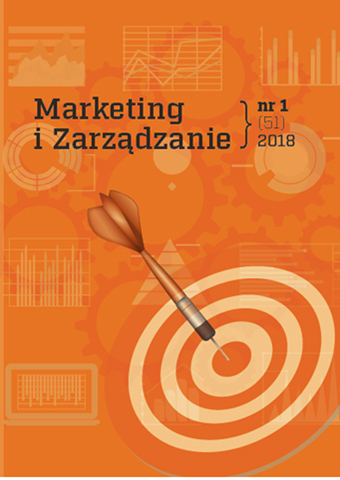
ISSN: 2450-775X
OAI
DOI: 10.18276/miz.2018.51-07


Issue archive /
nr 1 (51) 2018
Wpływ kapitału strukturalnego na zdolność powstawania miejsc pracy w korporacjach sektora nowych technologii
(The Impact of Structural Capital on the Ability to Create Jobs in Corporations in the New Technology Sector)
| Authors: |
Mirosław
Geise
Uniwersytet Kazimierza Wielkiego w Bydgoszczy , Wydział Humanistyczny |
| Keywords: | new technology sector structural capital workplaces competitive advantages |
| Data publikacji całości: | 2018 |
| Page range: | 10 (73-82) |
| Klasyfikacja JEL: | G32 J24 |
Abstract
The paper presents the ability to create job openings in the key new technology companies in the world. Creation of new jobs in terms of the intensification of globalization processes and scientific and technical progress is determined by the accumulation of structural capital. The speed and efficiency of the transfer from intellectual capital to structural capital strengthens the company’s competitive position and creates conditions for greater economic activity and increases labor demand. The paper uses selected methods of measuring the value of intellectual capital in the company and statistical methods, including elements of the correlation calculus.
Download file
Article file
Bibliography
| 1. | Geise, M. (2015). Krajowe rynki pracy w praktyce współczesnego kapitalizmu. Bydgoszcz: Wyd. UKW. |
| 2. | Geise, M. (2016). Moc sprawcza podmiotów globalnego rynku w pokryzysowej rzeczywistości. W: L.W. Zacher (red.), Moc sprawcza ludzi i organizacji (s. 477–495). Warszawa: Poltext. |
| 3. | http://fortune.com/fortune500/list/ (7.11.2017). http://fortune.com/global500/list/filtered?sector=Technology (8.11.2017). https://pl.tradingeconomics.com/countries (5.11.2017). |
| 4. | Pissarides, C.A. (2012). Teoria bezrobocia w stanie równowagi. Warszawa: PTE. |
| 5. | Stewart, T.A. (2003). Intellectual Capital. The New Wealth of Organizations. London: Nicholas Brealey Publishing. |
| 6. | Strojny, M. (2003). Metody i narzędzia pomiaru kapitału intelektualnego w organizacji. W: D. Dobija (red.), Pomiar i rozwój kapitału ludzkiego przedsiębiorstwa (s. 225–254). Warszawa: PFPK. |
| 7. | Sullivan, P.H. (1999). Profiting from intellectual capital. Journal of Knowledge Management, 3 (2), 132–143. |
| 8. | Szymański, W. (2004). Interesy i sprzeczności globalizacji. Warszawa: Wydawnictwo Naukowe PWN. |
| 9. | Urbanek, G. (2008). Wycena aktywów niematerialnych przedsiębiorstwa. Warszawa: PWE. |